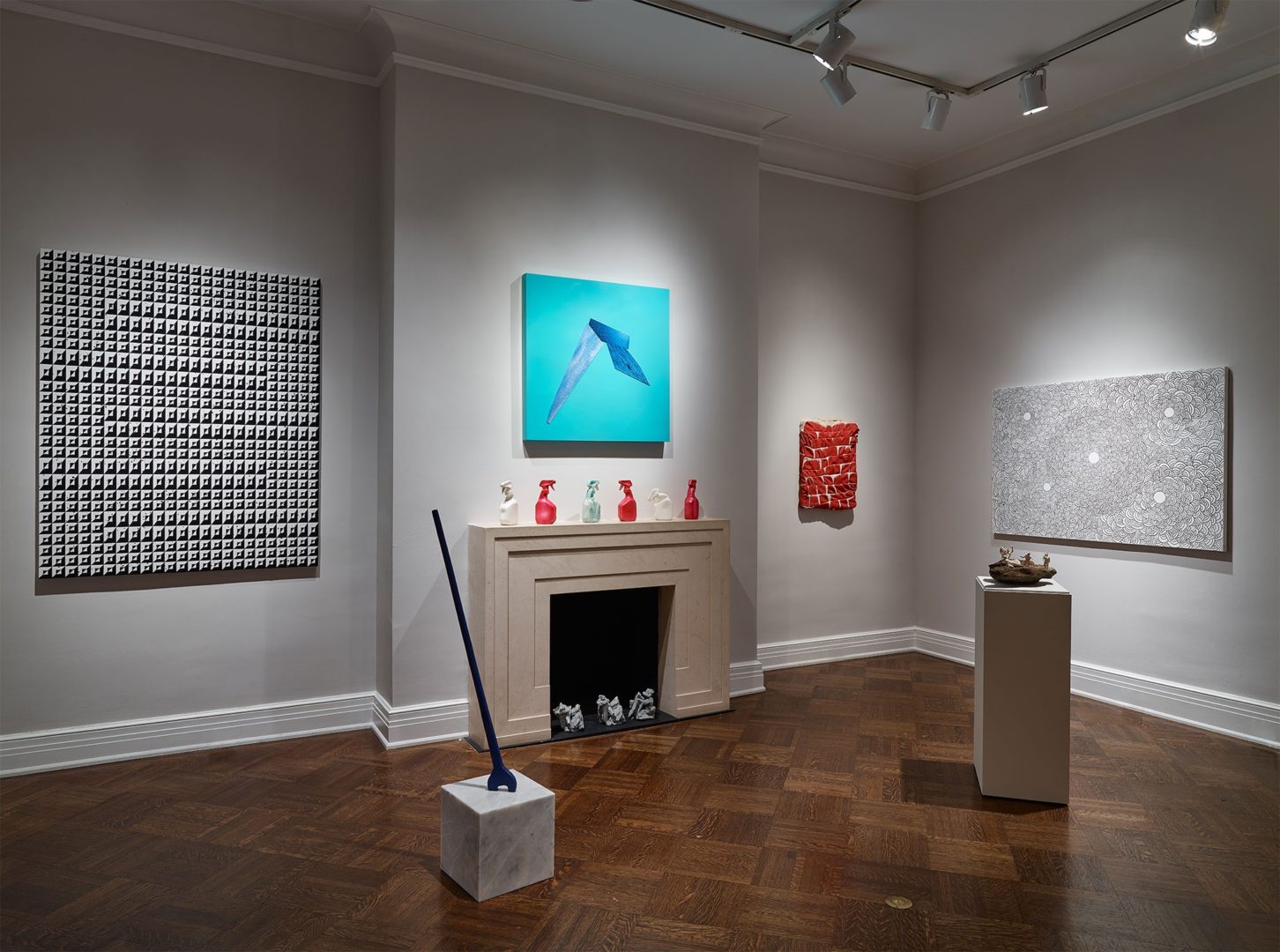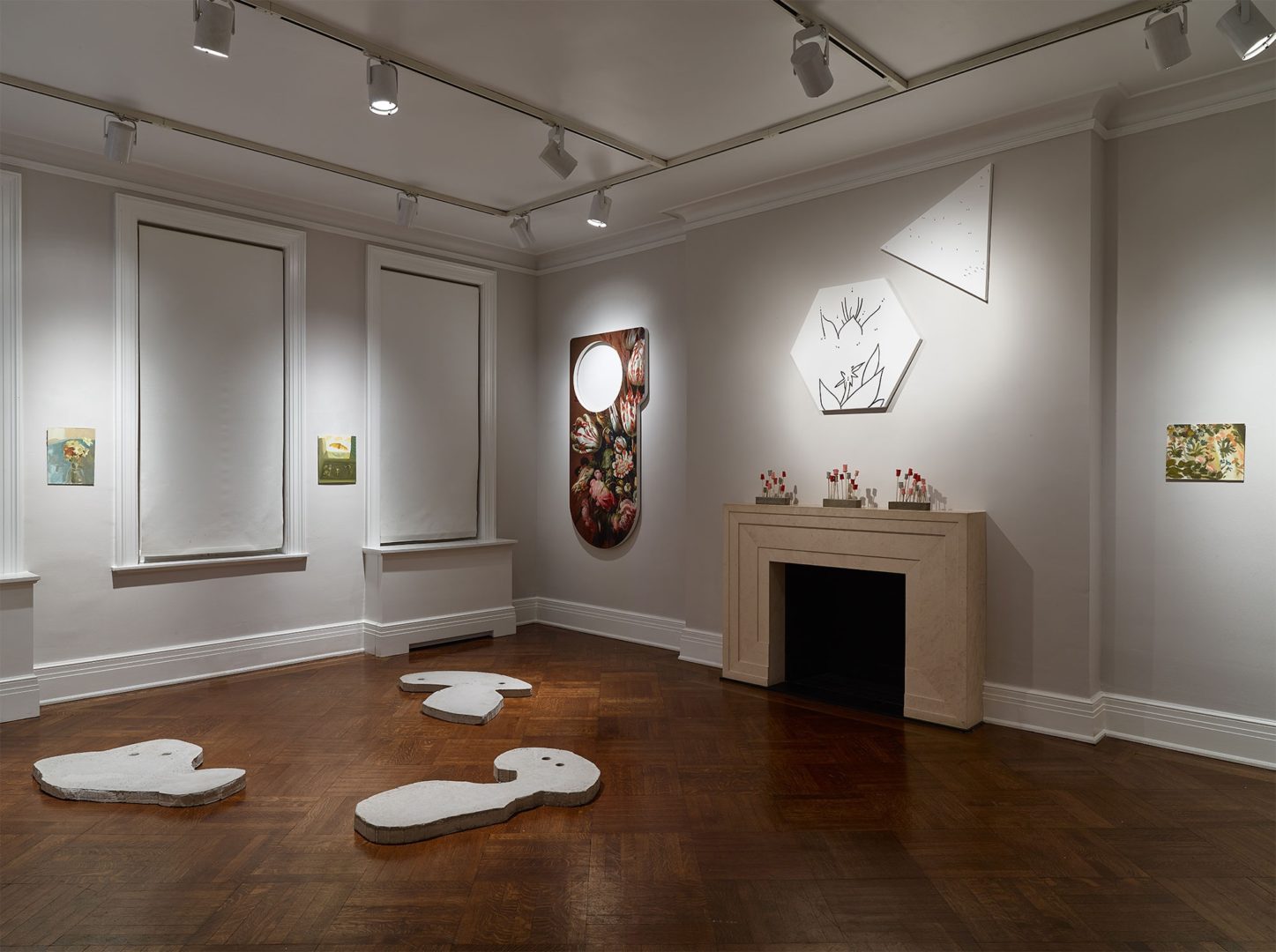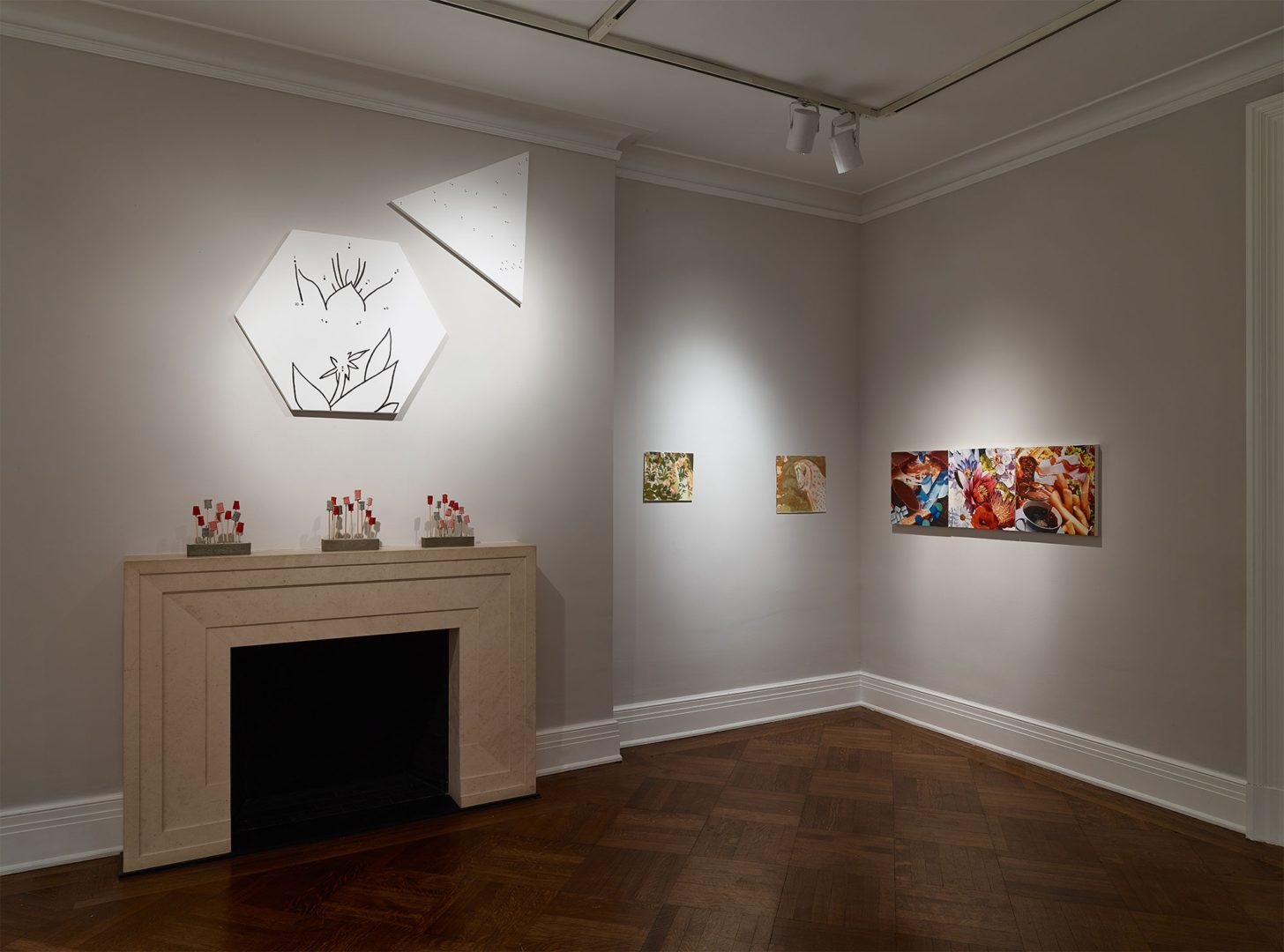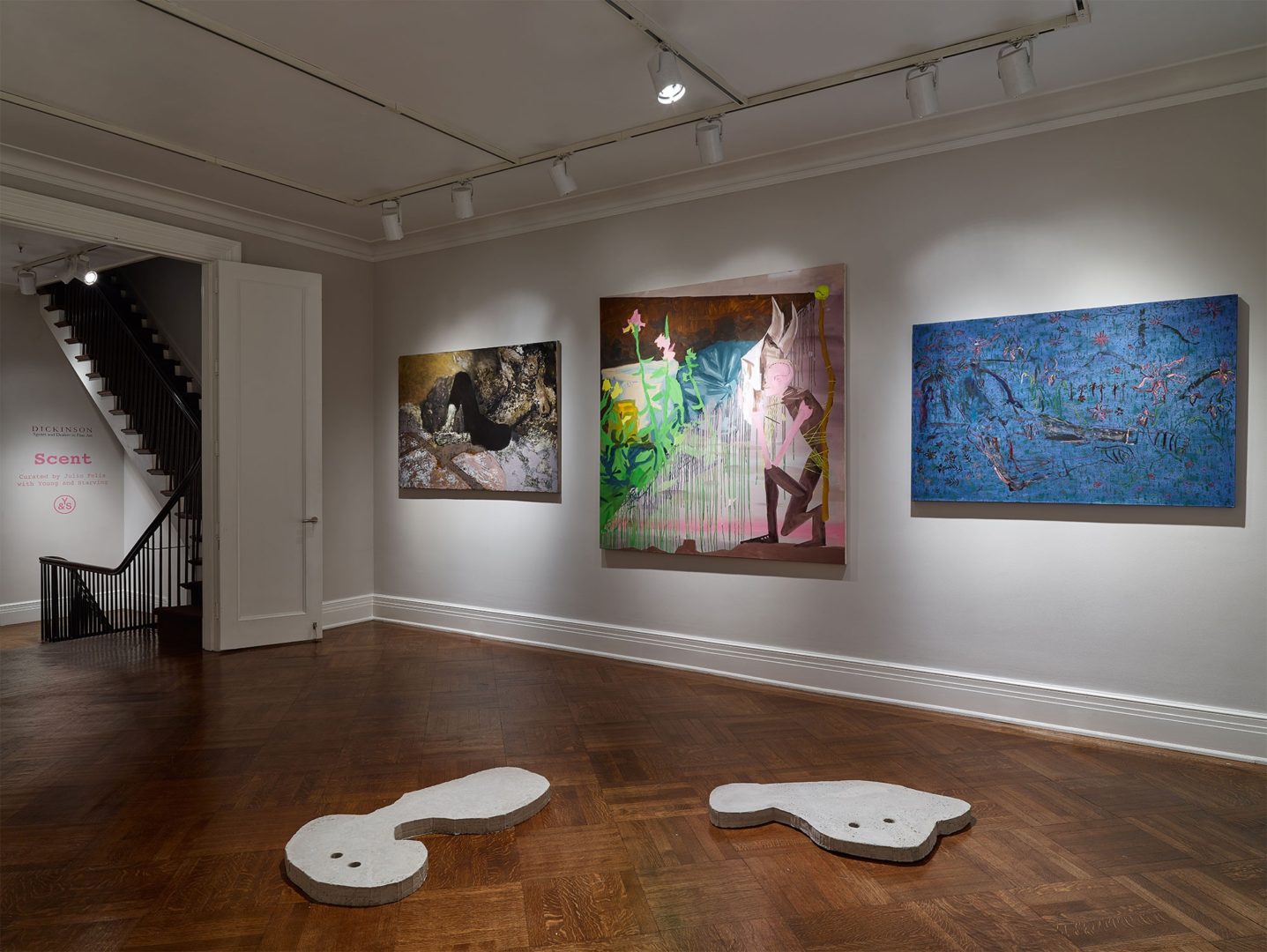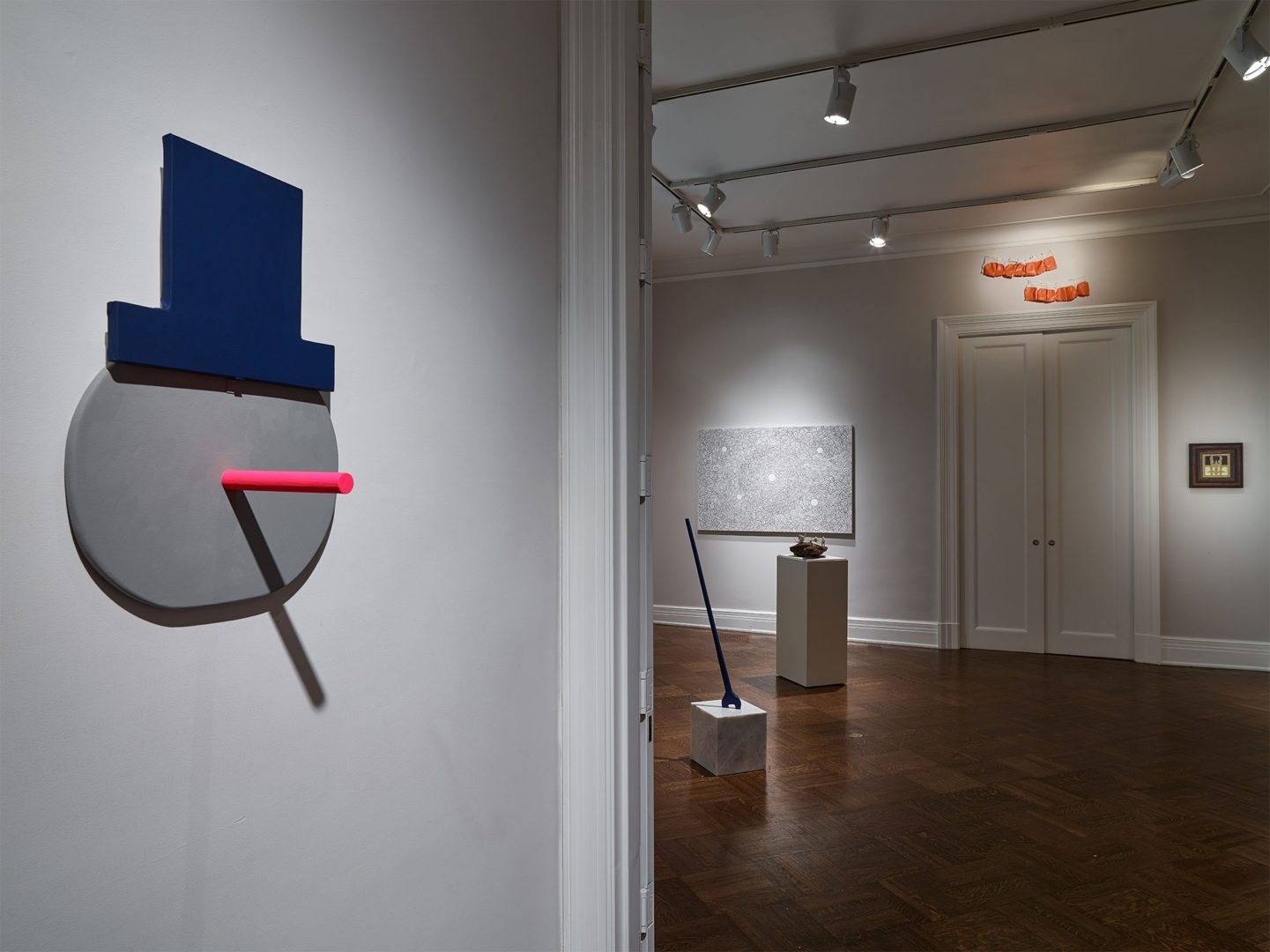Pablo Picasso was to explain: “At the time, everyone talked about how much reality there was in Cubism. But they didn’t really understand, it’s not a reality you can take in your hand. It’s more like a perfume — in front of you, behind you, to the sides. The scent is everywhere, but you don’t quite know where it comes from.” The early 20th century art that Picasso describes appeared to follow a kind of geometrical order, something one intuits or senses rather than something one perceives with the eyes.
In the mid 20th century, as the Abstract Expressionists stepped in and took the reins of modern art, Jackson Pollock – following the disruptive tendency of Cubism – created works infused with the same kind of perfume. In “Scent”, 1955, Pollock seemed to have disrupted the cubist tradition from a hermetic geometry to a free and pulsating dissolving serenity. Pollock’s distillation of formal and compositional means became quintessentially American and paved the way for the Minimalists and the Pop. Jasper Johns, who around the 1950s created art based on universality, dedicated seven years (1973 – 1980) to create works inspired by a purely invented pattern. Crisp in its ordering, Johns’ “Scent”, 1975, appeared as a systematization of the idea of gestural abstraction. Johns had achieved the complete opposite of Pollock’s sense of automatic release.
This exhibition will show the disruptive dialogue that connects contemporary artists with the past. The artists in this exhibition will remind us that breaking down does not yield certainty, but it’s opposite, which is ambiguity. By making simpler things we do not make things any simpler.
The works in this exhibition will show a range of influences: the seemingly rigorous reducing geometry of the Cubists, the gestural abstraction of the Abstract Expressionists, the modularity and repetition of the Minimalists and the very clearly planned mental program of execution praised by the Pop. With this exhibition, we intend to prove that the tradition of dissolving distinctions is still appealing for the new generation of artists. Finally, we suggest that this scent, which has been with us for over a century, continues to drive modernity and is more alive than it ever was.
Exhibitions
Selected Works
Press Release
Selected Press
BY JOCELYN SILVER PHOTOS BY MARIE STOTZ / 18th Apr 2016
Last weekend, I found myself at a dinner party–more like an artistic salon–at a beautiful apartment on 5th avenue in the 20s, the kind where everyone was gorgeous and had Important Things To Say about art and New York and Bernie Sanders. I was definitely not smart enough to be there, as the only Important Things that I have to say involve the intricate plotting of Vanderpump Rules. But I still felt happy and welcome and full of good tequila, mostly due to the excellent hosting skills of one Darryl Westly, an artist who just wants to build and improve New York’s artistic community, one fab sushi-filled affair at a time.
Until last November, Westly worked as one of artist Jeff Koons’ assistants at his famous factory-like studio, where dozens of people work shifts around the clock to produce his work (Koons himself functions as more of an idea man). But now, the Chicago-born Cooper Union alum (who, in the interest of full disclosure, is a friend) is working entirely on his own–no day job, no assistant work–which is fairly rare for an artist in their mid-20s in New York City. Spend a couple minutes looking at his work, however, and it begins to make sense.
“Pursuit,” a photo-realist triptych painting by Darryl Westly.
Westly’s work is eye-poppingly beautiful, the kind of thing that, to my untrained eye, already looks like it should be the focus of some kind of massive retrospective at a blue-chip gallery. His biggest work to date, a triptych called “Pursuit,” is technically done in a photo-realist style, but that seems like almost the wrong descriptor: the paintings are more like photos than real life, like they’re not trying to mimic life as the eye sees it.
Last winter, Westly was included in an exhibition at Dickinson Roundell gallery dedicated to “the disruptive dialogue that connects contemporary artists with the past.” And his work certainly does do that; the still life, along with his sculptures of typically American objects dipped in pewter, kind of recall memento mori, the 17th-century style of still life that incorporates skulls and other symbols of death. Westly’s works are bright and striking and don’t feature dead people, but at the end of the day, they still represent stuff that’ll kill you: junk food, as well as a capitalist market that serves the decaying American Dream.
He’s also a fun dude who likes Justin Bieber, Kanye, and comics. I met him at his crowded Chinatown studio, where he immediately offered me food and wine as I stole some cigarettes. We then sat down to talk about what it’s like to be a young artist in the ever-gentrifying NYC.
Can you tell me about the triptych, “Pursuit”?
It deals with this idea of instant gratification. I was thinking a lot [about] the idea [of] having some chump change or something like that and going and buying these things—you’d look at it and you’d be like, “Oh, I’m gonna feel good once I eat this, once I consume this.” But it’s not even going towards making you happy or what makes you feel fulfilled. You can look at politics right now and see how things are—if this nation’s truly hinged on this idea of pursuit of happiness for everyone, then we should feel empowered to go ahead and enjoy what we want to enjoy.
But that kind of prescriptivism is often what stops us from being in contact with what we actually want. So, the paintings reflect desire, and my coming to terms with what I’ve repressed as a result of a certain kind of feeling or different kinds of ideas.
On a lighter note, what’s your favorite junk food?
I would definitely say Peanut Butter M&M’s.
I have impulse control issues. Is it hard to paint all this stuff and not eat it?
No, it’s not actually, because I’ll take the pictures, then I’ll go and work on the paintings. I don’t always have everything in front of me. You know, it’s [the] idea of moderation too. I was doing some reading, I was really looking a lot at early Freud, [at] this idea of transference and the transference of certain forms and things. Art has so much to do with this idea of transference. Whenever we are associating ourselves, [whether it’s with] what we buy, what we’re thinking, clothing or whatever else, [we’re] taking a certain desire and bringing it somewhere else. So for me at that certain point in my life, I just needed to feel good and empowered to a certain extent.
We’re going through the idea, which is like formed from the desire, then the actual application of the painting. That’s where I thought using a photo-realistic technique would be interesting to work with. You deal with painting in a way that’s different from photographs. Photographs deal with that kind of capturing of a certain moment, which then becomes a cinematic sort of thing, whereas painting is more or less a translation of a certain kind of idea.
“WORKING [FOR] JEFF KOONS… ESSENTIALLY FEELS LIKE A MEDIEVAL APPRENTICESHIP.”
What was it like to work for Koons?
At Cooper [Union], I felt like I was learning so much in theory, and so many ideas that helped formulate what I wanted to do. Working [for] Jeff Koons was extremely hands on. So, I was producing constantly, and it’s just one deadline after another. The factory idea that’s been placed upon it is totally accurate. But it teaches you so much. It essentially feels like a medieval apprenticeship. I think it helps you think in terms of being an artist and a problem solver.
It seems like a lot of older people think that the New York art world is kind of dead. So what do you think about the current artistic climate in New York? What is it like to be a working artist and living in Manhattan?
I think there’s so much energy. As long as you keep your eyes open, there [are] so many people who are constantly going to inspire you. It’s about going all in, essentially.
So you’re not about to pack up and move to Berlin?
Thought about it actually!
The artist eating and working on Mott Street. His apartment/studio is filled with works in progress, posters, and some inspirational quotes from The Libertines.
Where do you see your career moving forward?
I’ve been working on basically completing this body of work. This body of paintings right here is really what’s been driving me. At this point, I just want to keep working, except on a larger scale. And I’ve been talking to a couple of friends right now, and we’re just starting to think about ideas of curation, taking on more roles, and also doing publications. So I see my work being part of a larger conglomerate, being associated with different artists. [I’d like to create] a sustainable way for the arts to thrive, as well as to connect other artists in New York.
To finish up, do you have any advice to people who are coming to New York, trying to be artists?
I think when you do something you have to be all in, and you have to accept yourself. You have to accept mistakes. So I think learning how to forgive yourself is really important, because I think [there’s always a gap] between what you want and how you feel you’re being perceived. But the more you can do that, the more you can feel confident about yourself. [And] relaxing! Relaxing is the best thing you can do. You have to be able to feel comfortable.
Check out more of Darryl Westly’s work at “Super Sketchy,” an exhibition at NYC’s DCTV, opening later this month, and at “New American Painting” at Coburn Projects in London, coming this May.
Photos shot exclusively for Milk by Marie Stotz.
Stay tuned to Milk for more New Bloods.

